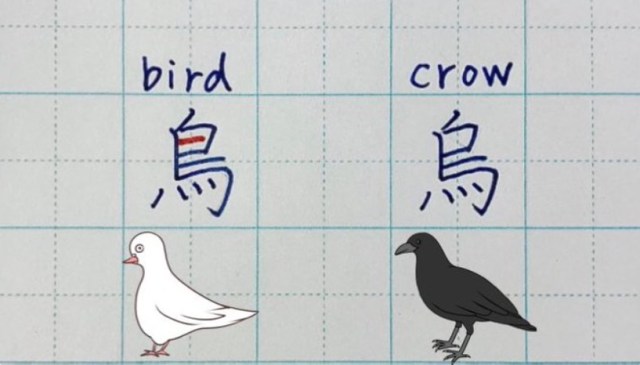
Learn how to never mistake the two kanji ever again.
With thousands of kanji to learn in the Japanese language, it can be hard to remember them all, especially when there’s only one stroke difference between some of them. However, knowing the etymology of the kanji can help a lot when it comes to creating a permanent, unshakeable foundation by which to recall them, and one instance is the history behind the kanji for the word “crow”.
▼ “Crow“, or “karasu” as it’s known in Japanese, looks strikingly similar to the kanji for “bird“, or “tori“.
The above image, shared online by Japanese teacher Kayo sensei, who goes by the handle @kayoshodo on Twitter, asks why the kanji for “crow” is missing that one line in the centre marked in red. Kayo sensei is here to explain the reason behind it all with a look at the original image from which the kanji for “bird” came from.
The horizontal stroke represents the eye of the bird, which is easily visible when the bird is white or relatively pale in colour. However, the crow is jet black, making the eye hard to make out, and this is the reason why there is no horizontal line in the kanji for “crow”.
Knowing the reason behind this small difference in appearance makes it easy to distinguish between the two similar kanji, and it’s something a lot of Japanese learners online were grateful to learn, sending Kayo sensei’s tweet viral with over 31,000 likes and 8,000 retweets.
A kanji of crow is one less horizontal stroke compared with a character of bird.
— Kayo sensei (@kayoshodo) July 22, 2020
Why??
This horizontal stroke express their eyes, but we can't find where crow's eyes are because they are all black.
So, the kanji of crow has no eyes(one horizontal stroke) in it.🤗 pic.twitter.com/ydRxyJFQja
▼ Her quick crow kanji tutorial was also a hit on Instagram:
https://www.instagram.com/p/CC9ai7WnkM8/?igshid=h9r0nkk57qo
The kanji for “bird” actually acts as a base kanji for a number of avian species to build upon. For instance, the kanji for “pigeon” or “hato” in Japanese adds the kanji for “nine” (pronounced “ku”) to the left of “bird”, as this reflects the “kuu kuu” sound pigeons make.
This character means pigeon( はとhato).
— Kayo sensei (@kayoshodo) July 22, 2020
This character is based on the sound of pigeon. 🕊
The pronunciation of the left part of character is "ku ". Pigeon cries like "kuu, kuu", so old people applied this kanji to pigeon.
(The right part means bird.) pic.twitter.com/l1Ie45T9On
It’s a fascinating look at some of the ways kanji have developed over the years, and the real-world scenarios embedded in their etymology really help to cement them in our brains. For more tips on learning and remembering kanji and ways to quickly improve your writing skills, be sure to give Kayo sensei a follow on Twitter and Instagram.
And if you really want to up your kanji game, you might want to review the kanji with the longest readings and master the top five most difficult kanji ever. Happy studying!
Source: Twitter/@kayoshodo, Instagram/kayo_japanese_lesson
Top image: Instagram/kayo_japanese_lesson
Insert images: Instagram/kayo_japanese_lesson
● Want to hear about SoraNews24’s latest articles as soon as they’re published? Follow us on Facebook and Twitter!

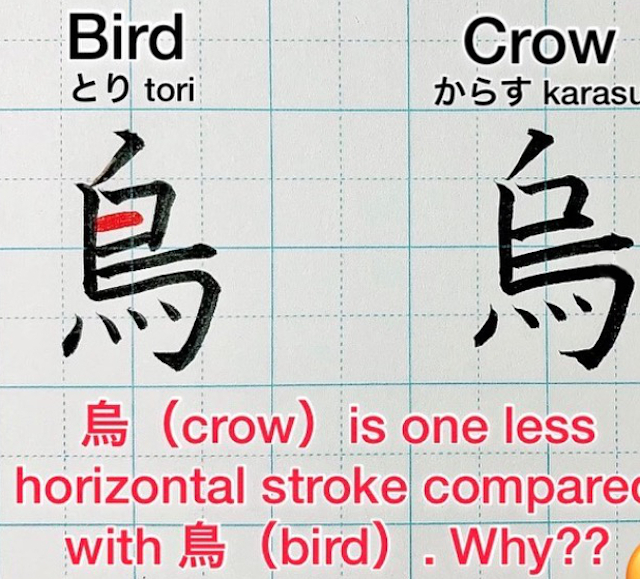
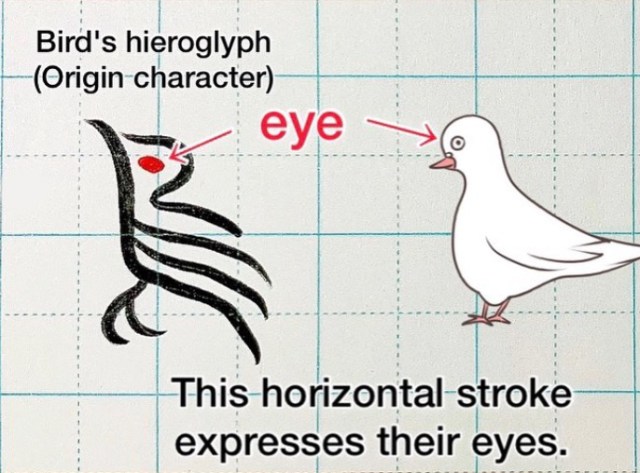
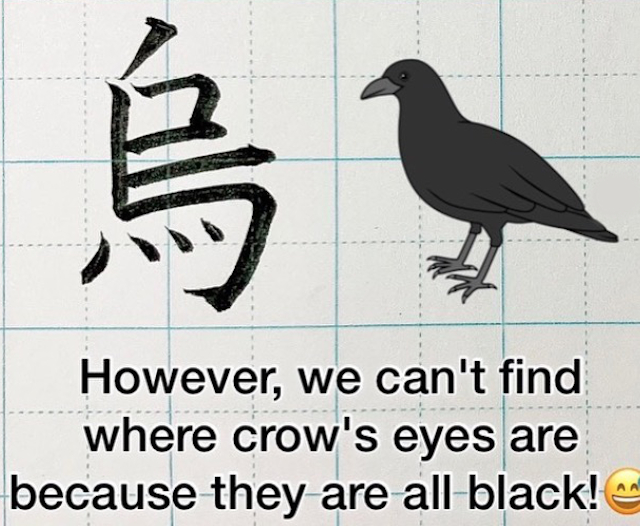
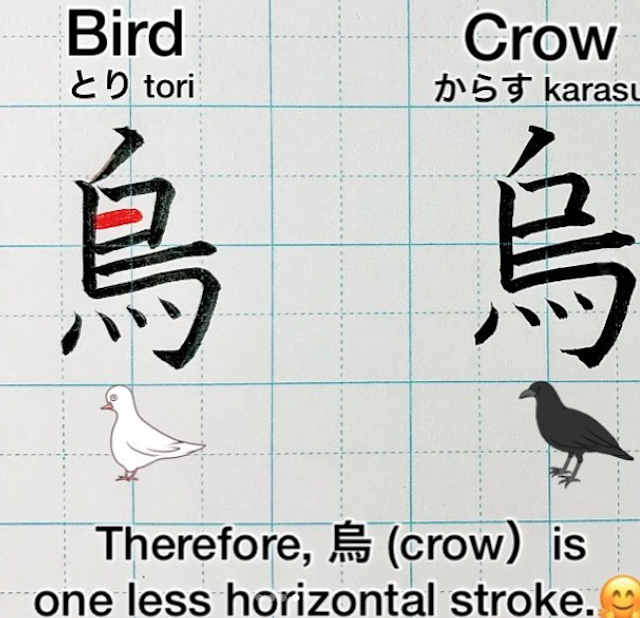
 Want to boost your ego? Head to the new Homeru “Praise” Bar in Osaka
Want to boost your ego? Head to the new Homeru “Praise” Bar in Osaka Edible fireworks? Japanese confectioner creates incredible sweets out of super-soft mochi【Photos】
Edible fireworks? Japanese confectioner creates incredible sweets out of super-soft mochi【Photos】 Cafe in Tokyo serves custom 2-D and 3-D latte art, and their coffee is nothing to sniff at either
Cafe in Tokyo serves custom 2-D and 3-D latte art, and their coffee is nothing to sniff at either Survey ranks Japanese prefectures by how much people want to continue living there
Survey ranks Japanese prefectures by how much people want to continue living there Japanese student criticised for campaign against excess plastic packaging
Japanese student criticised for campaign against excess plastic packaging How to order snacks on a Shinkansen bullet train in Japan
How to order snacks on a Shinkansen bullet train in Japan Demon Slayer: Kimetsu no Yaiba gets new roller coaster attractions and food at Universal Studios Japan
Demon Slayer: Kimetsu no Yaiba gets new roller coaster attractions and food at Universal Studios Japan New samurai glasses are Japan’s latest weird must-have souvenir
New samurai glasses are Japan’s latest weird must-have souvenir Burger King Japan suddenly adds Dr. Pepper and Dr. Pepper floats to its menu nationwide
Burger King Japan suddenly adds Dr. Pepper and Dr. Pepper floats to its menu nationwide Nintendo history you can feel – Super NES, N64, and GameCube controllers become capsule toys
Nintendo history you can feel – Super NES, N64, and GameCube controllers become capsule toys High-fashion Totoro cuddle purse is like an elegant stroll in the forest【Photos】
High-fashion Totoro cuddle purse is like an elegant stroll in the forest【Photos】 Japan’s new difficult-to-drink-from beer glass protects your liver, but it’s a brutal experience
Japan’s new difficult-to-drink-from beer glass protects your liver, but it’s a brutal experience Kyoto Tower mascot termination reveals dark side behind cute Japanese characters
Kyoto Tower mascot termination reveals dark side behind cute Japanese characters New Pokémon ice cream, dessert drinks, and cool merch coming to Baskin-Robbins Japan【Pics】
New Pokémon ice cream, dessert drinks, and cool merch coming to Baskin-Robbins Japan【Pics】 To combat declining birth rate, Japan to begin offering “Breeding Visas” to foreigners
To combat declining birth rate, Japan to begin offering “Breeding Visas” to foreigners Hello, cosmetics! Clinique teams up with Hello Kitty this summer for first-time collaboration
Hello, cosmetics! Clinique teams up with Hello Kitty this summer for first-time collaboration “The most Delicious Cup Noodle in history” – Japan’s French Cup Noodle wins our heart【Taste test】
“The most Delicious Cup Noodle in history” – Japan’s French Cup Noodle wins our heart【Taste test】 Starbucks releases a cute Frappuccino and Unicorn Cake…but not in Japan
Starbucks releases a cute Frappuccino and Unicorn Cake…but not in Japan McDonald’s Japan’s Soft Twist Tower: A phantom ice cream only sold at select branches
McDonald’s Japan’s Soft Twist Tower: A phantom ice cream only sold at select branches Yabai Ramen: What makes this Japanese ramen so dangerous?
Yabai Ramen: What makes this Japanese ramen so dangerous? Finally! Nintendo Japan expands Switch 8-bit controller sales to everybody, Online member or not
Finally! Nintendo Japan expands Switch 8-bit controller sales to everybody, Online member or not Japanese government wants to build luxury resorts in all national parks for foreign tourists
Japanese government wants to build luxury resorts in all national parks for foreign tourists 10 things you should buy at 7-Eleven in Japan
10 things you should buy at 7-Eleven in Japan Studio Ghibli releases anime heroine cosplay dresses that are super comfy to wear
Studio Ghibli releases anime heroine cosplay dresses that are super comfy to wear Woman charged for driving suitcase without a license in Osaka
Woman charged for driving suitcase without a license in Osaka Studio Ghibli unveils My Neighbour Totoro miniature house model
Studio Ghibli unveils My Neighbour Totoro miniature house model Kyoto experiencing problems with foreign tourists not paying for bus fares, but not on purpose
Kyoto experiencing problems with foreign tourists not paying for bus fares, but not on purpose Fighting mild hunger with a Japanese soda that turns into jelly in the stomach【Taste test】
Fighting mild hunger with a Japanese soda that turns into jelly in the stomach【Taste test】 Studio Ghibli’s Howl’s Moving Castle tapestry unveiled in Japan for first time
Studio Ghibli’s Howl’s Moving Castle tapestry unveiled in Japan for first time McDonald’s new Happy Meals offer up cute and practical Sanrio lifestyle goods
McDonald’s new Happy Meals offer up cute and practical Sanrio lifestyle goods Sales of Japan’s most convenient train ticket/shopping payment cards suspended indefinitely
Sales of Japan’s most convenient train ticket/shopping payment cards suspended indefinitely Sold-out Studio Ghibli desktop humidifiers are back so Totoro can help you through the dry season
Sold-out Studio Ghibli desktop humidifiers are back so Totoro can help you through the dry season Japanese government to make first change to romanization spelling rules since the 1950s
Japanese government to make first change to romanization spelling rules since the 1950s Foreigner’s request for help in Tokyo makes us sad for the state of society
Foreigner’s request for help in Tokyo makes us sad for the state of society Ghibli founders Toshio Suzuki and Hayao Miyazaki contribute to Japanese whisky Totoro label design
Ghibli founders Toshio Suzuki and Hayao Miyazaki contribute to Japanese whisky Totoro label design Doraemon found buried at sea as scene from 1993 anime becomes real life【Photos】
Doraemon found buried at sea as scene from 1993 anime becomes real life【Photos】 Tokyo’s most famous Starbucks is closed
Tokyo’s most famous Starbucks is closed Princesses, fruits, and blacksmiths: Study reveals the 30 most unusual family names in Japan
Princesses, fruits, and blacksmiths: Study reveals the 30 most unusual family names in Japan Reebok teams up with fashion brand Yoshiokubo for traditional-culture-inspired sneakers
Reebok teams up with fashion brand Yoshiokubo for traditional-culture-inspired sneakers Learn Japanese kanji with captivating stop-motion videos created by Tokyo animator
Learn Japanese kanji with captivating stop-motion videos created by Tokyo animator Japanese wife has an Instagram account just for the trash her husband leaves around the house
Japanese wife has an Instagram account just for the trash her husband leaves around the house Japanese study tip: Imagine kanji characters as fighting game characters, like in this cool video
Japanese study tip: Imagine kanji characters as fighting game characters, like in this cool video Hayao Miyazaki’s Nausicaä of the Valley of the Wind set to become live-action Japanese kabuki play
Hayao Miyazaki’s Nausicaä of the Valley of the Wind set to become live-action Japanese kabuki play Daughter of Japanese idol and former SMAP star Takuya Kimura makes her modelling debut in Japan
Daughter of Japanese idol and former SMAP star Takuya Kimura makes her modelling debut in Japan Starbucks Japan reopens with extra measures to prevent coronavirus’ spread
Starbucks Japan reopens with extra measures to prevent coronavirus’ spread Renowned Japanese calligraphy teacher ranks the top 10 kanji that foreigners like
Renowned Japanese calligraphy teacher ranks the top 10 kanji that foreigners like Yakiniku chain store lets customers enjoy delicious Japanese barbecue together with their dogs
Yakiniku chain store lets customers enjoy delicious Japanese barbecue together with their dogs Foreigners misreading Japanese kanji of “two men one woman” is too pure for Japanese Internet
Foreigners misreading Japanese kanji of “two men one woman” is too pure for Japanese Internet Poop Kanji-Drill toilet paper is the best way to accomplish your Japanese studying doo-ties
Poop Kanji-Drill toilet paper is the best way to accomplish your Japanese studying doo-ties Tired of wasting paper practicing your kanji? Try these reusable water-activated practice sheets
Tired of wasting paper practicing your kanji? Try these reusable water-activated practice sheets Fed-up Japanese city hires a hawk to chase occupying army of crows away from city hall【Videos】
Fed-up Japanese city hires a hawk to chase occupying army of crows away from city hall【Videos】 “Disaster”: 2018 Kanji of the Year unveiled by Buddhist monk at Kiyomizudera temple in Kyoto
“Disaster”: 2018 Kanji of the Year unveiled by Buddhist monk at Kiyomizudera temple in Kyoto Foreigners in Japan vote for the best-looking katakana character
Foreigners in Japan vote for the best-looking katakana character
Leave a Reply